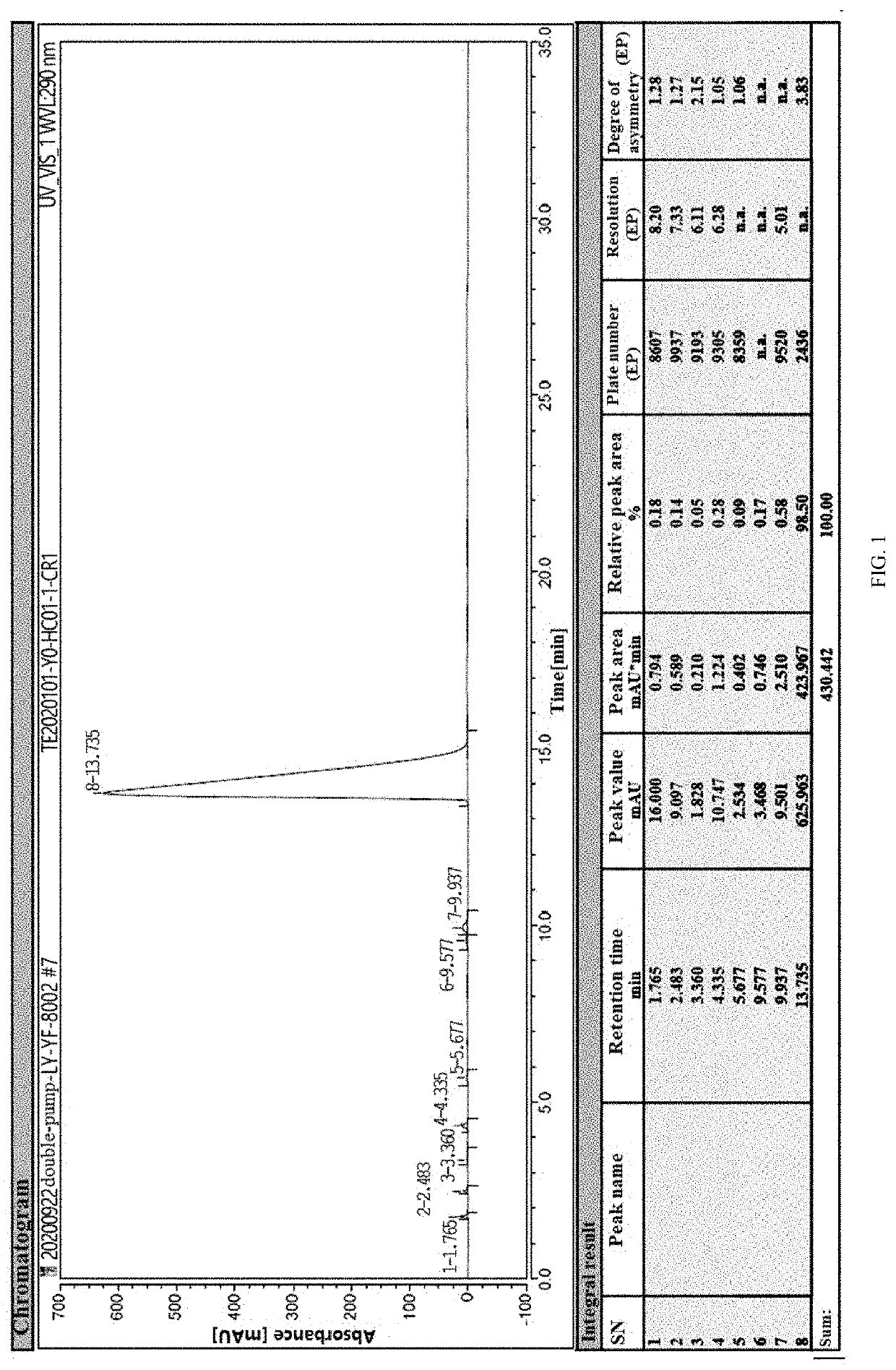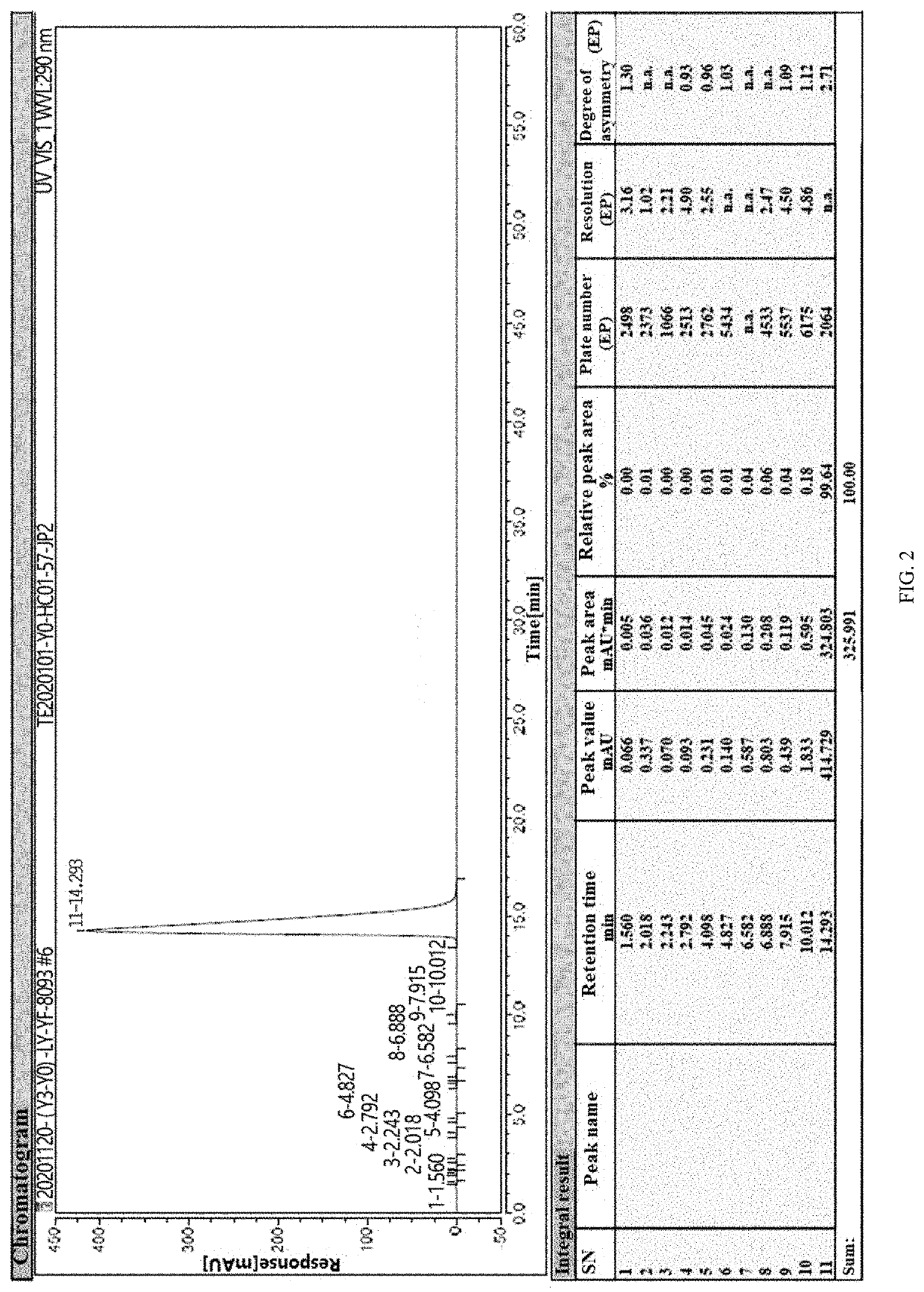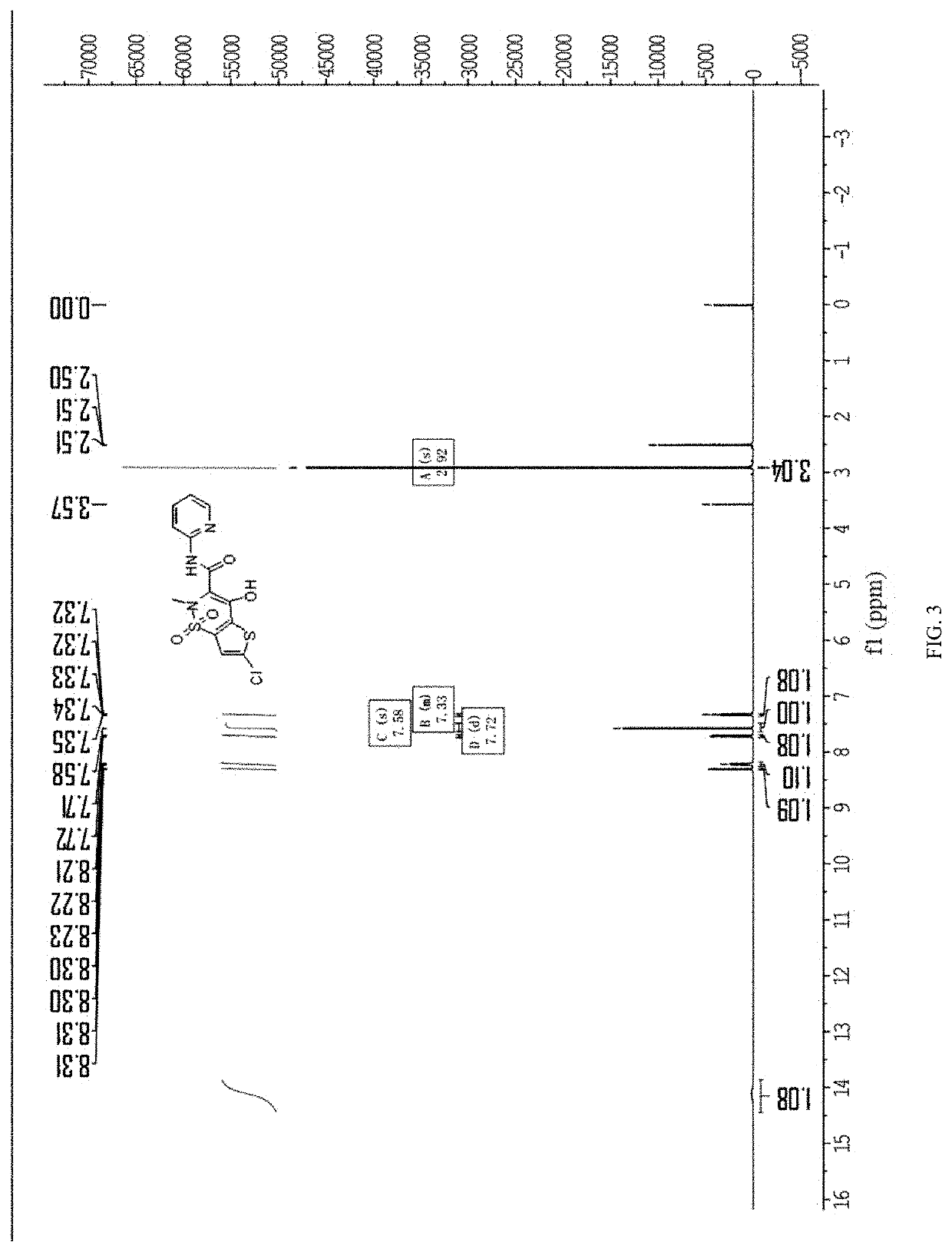Method for preparing lornoxicam
a lornoxicam and lornoxicam technology, applied in the field of lornoxicam preparation, can solve the problems of low total yield, large side reaction rate, and serious pollution
- Summary
- Abstract
- Description
- Claims
- Application Information
AI Technical Summary
Benefits of technology
Problems solved by technology
Method used
Image
Examples
example 1
[0039]Under nitrogen, 200 mL of xylene, 10 g of 6-chloro-4-hydroxy-2-methyl-2-H-thieno[2,3-e]-1,2-thiazine methyl carboxylate-1,1-dioxide, 3.65 g of 2-aminopyridine, and 0.6 g of p-toluenesulfonic acid were added into a 500 mL four-neck flask. The above materials were heated to 130° C., and then subjected to an ammonolysis at this temperature for 4 hours. The resulting reactant was sampled to conduct a HPLC (High Performance Liquid Chromatography) detection. When the content of 6-chloro-4-hydroxy-2-methyl-2-H-thieno[2,3-e]-1,2-thiazine methyl carboxylate-1,1-dioxide was less than or equal to 2%, the reaction was terminated.
[0040]The reaction solution was cooled to 50° C., and then subjected to a vacuum concentration at this temperature and a pressure of −0.07 MPa to remove the solvent, and the vacuum concentration was stopped after the reaction solution was concentrated to 30 mL. The resulting reaction solution was cooled to 20° C., and 50 mL of a mixed solution of dichloromethane a...
example 2
[0042]Under nitrogen, 400 mL of xylene, 20 g of 6-chloro-4-hydroxy-2-methyl-2-H-thieno[2,3-e]-1,2-thiazine methyl carboxylate-1,1-dioxide, 7.3 g of 2-aminopyridine, and 1.2 g of p-toluenesulfonic acid were added into a 1 L four-neck flask. The above materials were heated to 115° C., and then subjected to an ammonolysis at this temperature for 5 hours. The resulting reactant was sampled to conduct a HPLC (High Performance Liquid Chromatography) detection. When the content of 6-chloro-4-hydroxy-2-methyl-2-H-thieno[2,3-e]-1,2-thiazine methyl carboxylate-1,1-dioxide was less than or equal to 2%, the reaction was terminated.
[0043]The reaction solution was cooled to 65° C., and then subjected to a vacuum concentration at this temperature and a pressure of −0.09 MPa to remove the solvent, and the vacuum concentration was stopped after the reaction solution was concentrated to 100 mL. The resulting reaction solution was cooled to 25° C., and 100 mL of a mixed solution of dichloromethane and...
example 3
[0045]Under nitrogen, 800 mL of xylene, 40 g of 6-chloro-4-hydroxy-2-methyl-2-H-thieno[2,3-e]-1,2-thiazine methyl carboxylate-1,1-dioxide, 14.6 g of 2-aminopyridine, and 2.4 g of p-toluenesulfonic acid were added into a 2 L four-neck flask. The above materials were heated to 110° C., and then subjected to an ammonolysis at this temperature for 6 hours. The resulting reactant was sampled to conduct a HPLC (High Performance Liquid Chromatography) detection. When the content of 6-chloro-4-hydroxy-2-methyl-2-H-thieno[2,3-e]-1,2-thiazine methyl carboxylate-1,1-dioxide was less than or equal to 2%, the reaction was terminated.
[0046]The reaction solution was cooled to 80° C., and then subjected to a vacuum concentration at this temperature and a pressure of −0.1 MPa to remove the solvent, and the vacuum concentration was stopped after the reaction solution was concentrated to 120 mL. The resulting reaction solution was cooled to 30° C., and 200 mL of a mixed solution of dichloromethane and...
PUM
| Property | Measurement | Unit |
|---|---|---|
| temperature | aaaaa | aaaaa |
| volume | aaaaa | aaaaa |
| temperature | aaaaa | aaaaa |
Abstract
Description
Claims
Application Information
 Login to View More
Login to View More - R&D
- Intellectual Property
- Life Sciences
- Materials
- Tech Scout
- Unparalleled Data Quality
- Higher Quality Content
- 60% Fewer Hallucinations
Browse by: Latest US Patents, China's latest patents, Technical Efficacy Thesaurus, Application Domain, Technology Topic, Popular Technical Reports.
© 2025 PatSnap. All rights reserved.Legal|Privacy policy|Modern Slavery Act Transparency Statement|Sitemap|About US| Contact US: help@patsnap.com



